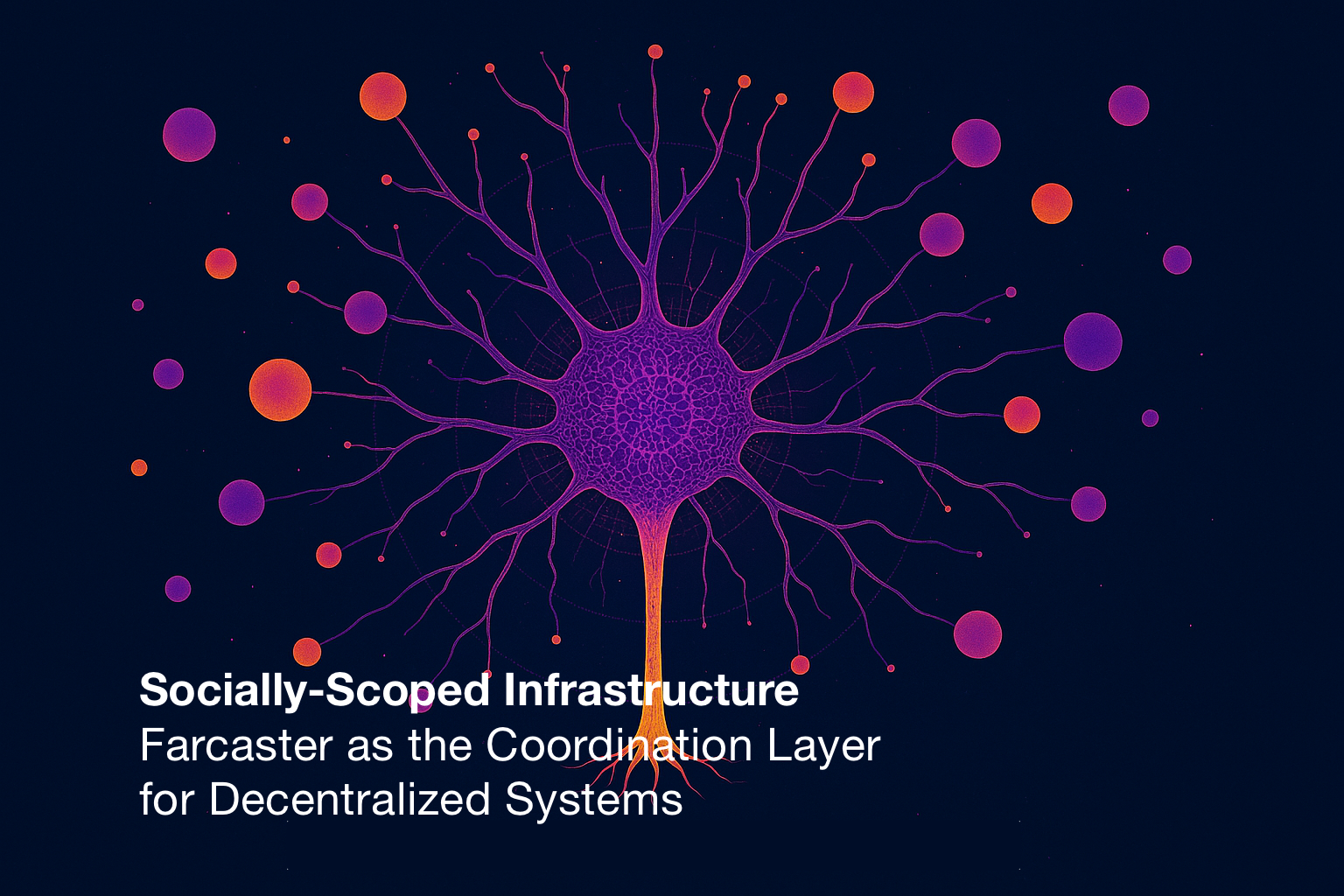Decentralized infrastructure (DePIN) has solved core problems like peer-to-peer networking, distributed consensus, and trustless storage. But one question remains: how do these systems decide what matters?
In this article, we introduce the concept of Socially-Scoped Infrastructure, where systems use social signals to decide what to act on. Farcaster becomes a real-time intent layer, guiding infrastructure like IPFS to respond.
Coordination Without Central Control
When the decentralized system is a blockchain, it is easy to prioritise transactions, allocate resources and decide what matters using global logic built around financial incentives.
But global, financial incentives may not be ideal for other types of decentralized infrastructure. In some of these cases, social signals may be the answer.
- Which files should be pinned?
- How should compute be allocated?
- Where should mesh networks expand?
Core Idea: Social Signals Trigger Infra Actions
| Layer | Role |
|---|---|
| Signal Layer | Users express intent (e.g. CIDs, tags, likes in casts) |
| Scope Layer | Defines whose signals matter (e.g. follows, lists, channels) |
| Agent | Listens and reacts (e.g. bot, daemon, client-side app) |
| Action Layer | Infra responds (e.g. pinning, caching, executing compute) |
Example: Pinning IPFS CIDs from Farcaster
The following example is inspired by lemon3:
You follow someone on Farcaster. They share an IPFS CID. Your client checks if the post is from a followed user. If yes, your IPFS node pins the content.
No consensus. No token. Just trust-based automation. Farcaster provides the intent. IPFS executes. Social attention becomes an input to decentralized infrastructure.
Broader Use Cases
This pattern works well in storage-based systems like IPFS, Filecoin, and Arweave, where resource allocation (storage) is simple and flexible. It can also apply to decentralized compute where tasks are parallelizable and scoped to a social subgraph.
In geographically distributed hardware systems, like Helium or WeatherXM, applying social scoping may be more complex or not feasible, because the network can not easily react to social signals -but if you have ideas on how to use these patterns there, ping me!
Conclusion
Combining decentralized infra with open social layers like Farcaster creates a programmable stack, where infrastructure responds to social signals.
These social signals can provide an alternative way for decentralized infrastructure to prioritize and allocate resources based on what matters to each one of the participants —locally, socially, even temporally.
